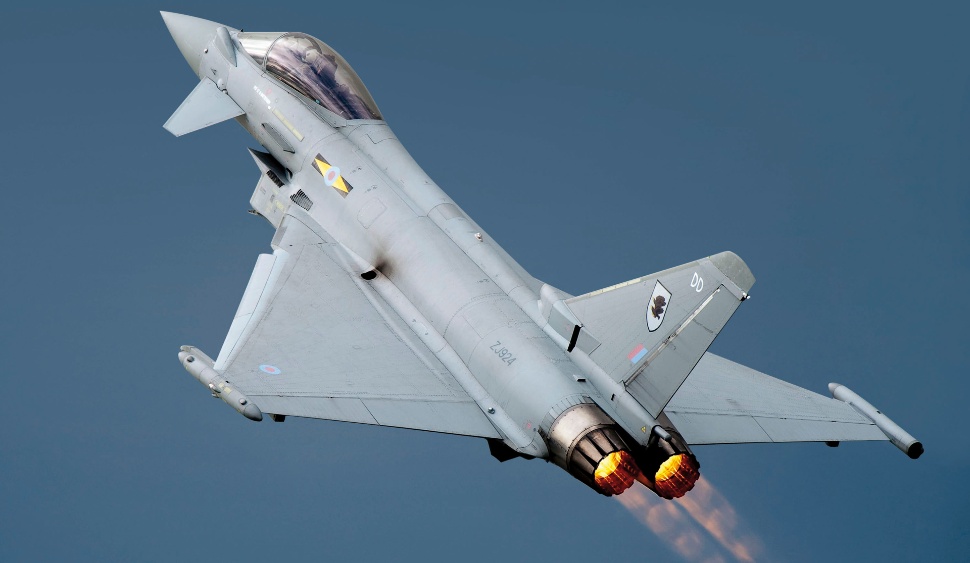A Rolls-Royce (R-R)-led team is to conduct a two-year study into hypersonic propulsion systems for the UK Ministry of Defence, with the technology demonstration linked to its Project Tempest future combat air system activity.
Supported by a £10 million ($12.2 million) funding allocation, the work will also involve technology partners BAE Systems and Reaction Engines. Activities will include “design studies, research, development, analysis and experimentation relating to high-Mach advanced propulsion systems”, the companies say.
Speaking at the Royal International Air Tattoo on 19 July, R-R chief engineer for defence future programmes Conrad Banks said phase one work will involve adapting a Eurojet EJ200 turbofan to test Reaction Engines’ heat exchanger technology, in a bid to reduce inlet temperature.

Eurofighter
“If you can cool the intake air down, suddenly you can expand the flight envelope on your gas turbine, and it introduces some exciting supersonic and hypersonic applications,” Banks says.
Pointing to an HTX experiment conducted earlier this year in Colorado, USA, Reaction Engines says it has already demonstrated during ground-based testing the ability to cool a 400˚C (750˚F) inlet temperature – the equivalent of flight conditions at M3. Using its precooler technology, the company’s goal is to take a 1,000˚C inlet temperature on its SABRE engine design for a reusable spaceplane to -150˚C within 1/20s.
Using an adapted EJ200 as a technology demonstrator, R-R and its partners will assess the demonstrated drop in temperature, “and see how that affects the performance of the engine”, Banks says. “That will give us the technology to be confident to predict and develop future systems,” he adds.
“We want to see whether or not the technology is really going to work,” says Air Vice Marshal Simon Rochelle, head of the Royal Air Force’s chief of staff, capability. “The theory of all of this appears to be right,” he says, adding: “We are seriously looking at what the spiral of this experiment would look like” for potential future applications.
Source: FlightGlobal.com
















